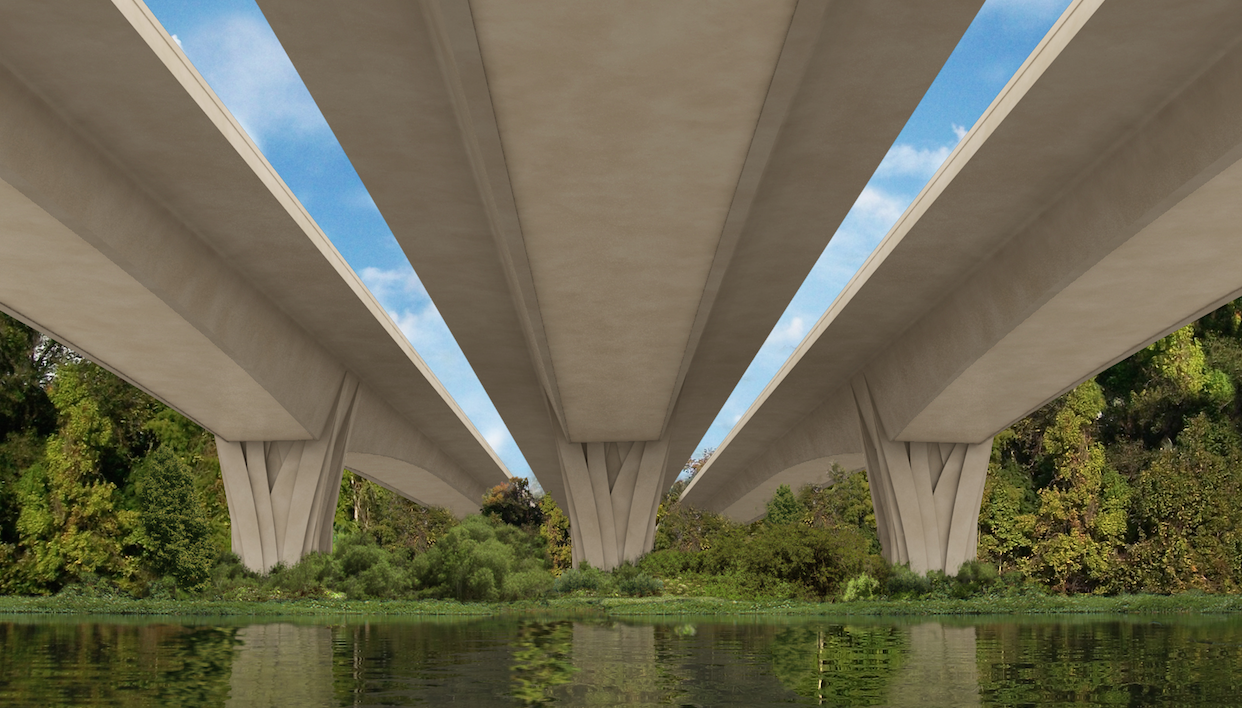
Construction has begun of three Wekiva Parkway bridges over the Wekiva River, drawing on complex engineering and construction that were critical in winning over approval from much of the environmental and conservation community for the overall 25-mile tolled expressway, the Florida Department of Transportation announced.
 The bridges, carrying the expressway and two non-tolled, one-lane service roads plus walking and bicycling paths, will extend nearly a half mile across the river and its extended banks, at the height of 60 feet, creating a broad wildlife corridor underneath, connecting Seminole State Forest, Rock Springs Run State Reserve and the Lower Wekiva River Preserve.
The bridges, carrying the expressway and two non-tolled, one-lane service roads plus walking and bicycling paths, will extend nearly a half mile across the river and its extended banks, at the height of 60 feet, creating a broad wildlife corridor underneath, connecting Seminole State Forest, Rock Springs Run State Reserve and the Lower Wekiva River Preserve.
The Wekiva River is recognized as a National Wild and Scenic River and a Florida Outstanding Waterway.
The bridges are part of Section 6 of the Wekiva Parkway construction project, a joint venture of the Florida Department of Transportation and the Central Florida Expressway Authority. When completely opened in 2021, it will connect State Road 429 in western Orange County and State Road 417 in northern Seminole, essentially completing a tolled expressway loop around greater Orlando.
Wekiva Parkway Section 6 construction, overseen by the Florida Department of Transportation, began October 17, on six miles of a largely elevated expressway along the State Road 46 corridor from the SR 429 interchange east of Camp Challenge Road in Lake County to just west of Longwood-Markham Road in Seminole County. Construction crews are now driving piles for bridge foundations.
The wildlife corridor along the Wekiva River will be one of four created by sections of elevated highways through the environmentally-sensitive and wildlife-rich Wekiva region. Opposition to the Wekiva Parkway eased, and agreements were signed in 2004 contingent on the parkway being far more accommodating to the preservation of the environment than typical highway projects. The wildlife bridges will total about 7,700 feet in length, providing nearly 100 times the safe passageway for animals as the two current wildlife tunnels under SR 46 in this area.
The bridges will be built using a technique known as “top-down construction” to minimize impacts to the Wekiva River. Floating turbidity barrier and sediment monitoring devices are being used to help protect the river during the work. The project team also is coordinating closely with environmental agencies and advocates. The bridges will replace the old SR 46 bridge, using slight arches, stone relief and other aesthetic designs intended to make them more visually appealing to river users.
Throughout Section 6, the wildlife bridges will total about 7,700 feet in length, providing nearly 100 times the safe passageway for animals as the two current wildlife tunnels under SR 46 in this area.


